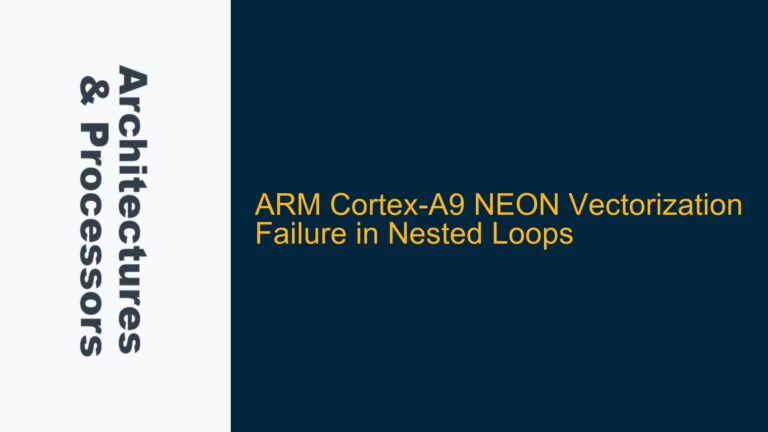ARM AHB-Lite Protocol and HMASTLOCK Signal Overview
The ARM Advanced High-performance Bus Lite (AHB-Lite) protocol is a widely used on-chip communication standard for high-performance embedded systems. It is designed to facilitate efficient data transfer between masters (such as CPUs, DMAs, or other peripherals) and slaves (such as memory controllers, registers, or other peripherals). One of the critical signals in the AHB-Lite protocol is the HMASTLOCK signal, which plays a pivotal role in ensuring data integrity and proper sequencing in multi-master systems.
The HMASTLOCK signal is used to indicate a locked transfer sequence. A locked sequence is a series of bus transactions that must be executed atomically, meaning no other master can interrupt or interleave its transactions during the locked sequence. This is particularly important in scenarios where data consistency and coherency are critical, such as when accessing shared resources or performing atomic operations.
In a typical AHB-Lite system, the arbiter is responsible for granting bus access to masters and ensuring that only one master has control of the bus at any given time. The arbiter also manages the HMASTLOCK signal, ensuring that it is asserted during locked sequences and de-asserted once the sequence is complete. However, the HMASTLOCK signal is not only sent to the arbiter but also to the slaves. This raises the question: why do slaves need to be aware of the HMASTLOCK signal?
Multi-Port Memory Controllers and Locked Transfer Requirements
The primary reason for sending the HMASTLOCK signal to slaves lies in the nature of certain types of slaves, particularly those that can be accessed by multiple masters. A common example of such a slave is a Multi-Port Memory Controller (MPMC). An MPMC allows multiple masters to access a shared memory resource concurrently, which introduces the potential for data corruption or inconsistency if proper synchronization mechanisms are not in place.
In a multi-master system, if one master initiates a locked sequence to perform an atomic operation, it is crucial that the slave (in this case, the MPMC) is aware of the locked sequence. This awareness allows the slave to enforce the atomicity of the operation by ensuring that no other master can access the memory during the locked sequence. Without the HMASTLOCK signal, the MPMC would have no way of knowing that a particular sequence of transactions must be treated as atomic, leading to potential data corruption or race conditions.
The AHB-Lite specification (ARM IHI 0033A) explicitly states that slaves capable of being accessed by more than one master must implement the HMASTLOCK signal. This requirement ensures that such slaves can properly handle locked sequences and maintain data integrity in multi-master environments. Slaves that are only accessed by a single master, on the other hand, do not need to implement the HMASTLOCK signal because they inherently process transactions in the order they are received, with no possibility of interleaving from other masters.
Implementing HMASTLOCK in Slaves: Best Practices and Solutions
When designing or integrating slaves that require support for the HMASTLOCK signal, several considerations must be taken into account to ensure proper functionality and performance. The following sections outline the key steps and best practices for implementing HMASTLOCK in slaves, particularly in the context of multi-port memory controllers and other shared resources.
Understanding the Slave’s Role in Locked Sequences
The first step in implementing HMASTLOCK support is to understand the role of the slave in locked sequences. For a slave like an MPMC, the primary responsibility is to ensure that no other master can access the memory during a locked sequence initiated by a master. This requires the slave to monitor the HMASTLOCK signal and enforce access restrictions accordingly.
When the HMASTLOCK signal is asserted, the slave must ensure that all transactions within the locked sequence are processed atomically. This means that once a locked sequence begins, the slave must not allow any other master to access the memory until the sequence is complete. The slave must also ensure that the order of transactions within the locked sequence is preserved, as any deviation could lead to data inconsistency.
Designing the HMASTLOCK Handling Logic
The next step is to design the logic within the slave that handles the HMASTLOCK signal. This logic must be capable of detecting the assertion and de-assertion of the HMASTLOCK signal and enforcing the necessary access restrictions during locked sequences.
One common approach is to use a state machine within the slave to track the status of the HMASTLOCK signal. The state machine would transition to a "locked" state when the HMASTLOCK signal is asserted and remain in this state until the signal is de-asserted. While in the "locked" state, the slave would reject any access attempts from other masters, ensuring that only the master that initiated the locked sequence can access the memory.
Another important consideration is the handling of back-to-back locked sequences. In some cases, a master may initiate multiple locked sequences in quick succession. The slave must be able to handle these sequences correctly, ensuring that each sequence is processed atomically and that the order of sequences is preserved.
Ensuring Proper Synchronization and Timing
Proper synchronization and timing are critical when implementing HMASTLOCK support in slaves. The slave must be able to detect the HMASTLOCK signal in a timely manner and enforce access restrictions without introducing unnecessary delays or bottlenecks.
One potential challenge is ensuring that the slave can detect the HMASTLOCK signal before any transactions within the locked sequence are processed. This requires careful design of the slave’s input logic to ensure that the HMASTLOCK signal is sampled at the appropriate time. In some cases, it may be necessary to introduce additional pipeline stages or synchronization logic to ensure that the HMASTLOCK signal is properly aligned with the transaction signals.
Another consideration is the handling of clock domain crossings. In systems where the slave operates in a different clock domain than the master, additional care must be taken to ensure that the HMASTLOCK signal is properly synchronized to the slave’s clock domain. Failure to do so could result in race conditions or metastability issues, leading to incorrect behavior.
Testing and Validation
Once the HMASTLOCK handling logic has been implemented, it is essential to thoroughly test and validate the design to ensure that it functions correctly under all expected conditions. This includes testing with various combinations of masters, locked sequences, and access patterns to verify that the slave enforces atomicity and preserves transaction order as required.
One effective testing strategy is to use a combination of simulation and hardware testing. Simulation allows for detailed analysis of the slave’s behavior under controlled conditions, while hardware testing provides real-world validation of the design. It is also important to test the slave in a multi-master environment to ensure that it correctly handles concurrent access attempts and enforces access restrictions during locked sequences.
Performance Optimization
Finally, it is important to consider performance optimization when implementing HMASTLOCK support in slaves. While the primary goal is to ensure data integrity and atomicity, it is also important to minimize the impact on system performance.
One potential optimization is to reduce the overhead associated with enforcing access restrictions during locked sequences. This can be achieved by carefully designing the slave’s access control logic to minimize delays and avoid unnecessary stalls. Another optimization is to use pipelining or parallel processing techniques to improve the slave’s overall throughput, particularly in systems with high transaction rates.
In conclusion, the HMASTLOCK signal is a critical component of the ARM AHB-Lite protocol, particularly in multi-master systems where data integrity and atomicity are paramount. By understanding the role of the HMASTLOCK signal, designing robust handling logic, ensuring proper synchronization and timing, and thoroughly testing and optimizing the implementation, designers can ensure that their slaves correctly support locked sequences and maintain system reliability and performance.






